Dominica
Atlantic Standard Time (AST), UTC−4 year-round
No daylight saving time observed
Sunrise around 05:30–06:00, sunset around 17:30–18:00 depending on season
Same time as Barbados and Puerto Rico
East Caribbean Dollar (XCD), symbol “EC$”
Fixed rate: 1 USD = 2.70 XCD
ATMs available in Roseau and Portsmouth; credit cards accepted at major hotels
Tipping: 10–15% customary at restaurants
November 3 – Independence Day (from UK, 1978)
Carnival in early October with parades and music in Roseau
Emancipation Day on first Monday in August
Community gatherings, flag‐raising ceremonies and cultural performances
Visa-Free Countries
Visa on Arrival Countries
E-Visa Countries
Visa Required Countries
Culture
Dominica, known as the “Nature Island of the Caribbean,” is equally celebrated for its rich Kalinago heritage, Creole traditions, and vibrant community life. Culture here is lived outdoors—through music in open‐air plazas, festivals in rainforest clearings, and culinary gatherings under the canopy.
- Kalinago Heritage: Home to one of the last surviving Indigenous Carib communities—visit the Kalinago Territory to learn traditional crafts, pottery and basket weaving directly from community artisans.
- Creole Language & Cuisine: Kwéyòl (French‐based Creole) thrives alongside English; signature dishes include callaloo soup, saltfish broth, mountain chicken stew (protected frog species), and cocoa tea.
- Music & Dance: Cadence-lypso and Bouyon beats pulse at village fetes; open‐air bouyon Thursdays and steelpan sessions bring locals and visitors together in dance.
- Festivals & Fairs: World Creole Music Festival every October attracts international artists; the freshly revived Independent Freedom Festival in August features cultural pageants, boat races and fireworks.
- Handicrafts & Markets: Roseau’s Old Market Bay buzzes with vendors selling batik paintings, hand-woven baskets, carved busts of Chief Kairouane and fresh island produce.
- Conservation Ethos: Community-led eco‐villages like Kalinago Barana Autê emphasize sustainable living—solar cookers, organic gardens and guided nature walks.
Tourism & Best Sites to Visit
Dominica’s dramatic volcanic interior and untouched coastline make it a haven for outdoors enthusiasts. From the world’s second‐largest boiling lake to hidden waterfalls, every excursion reveals a new facet of this biodiverse paradise.
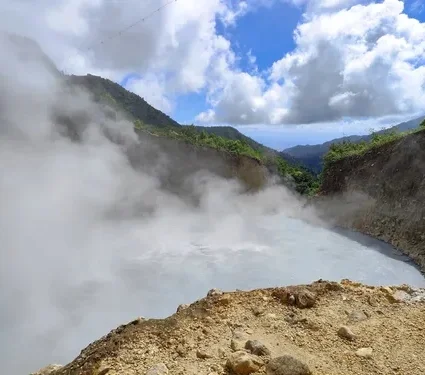
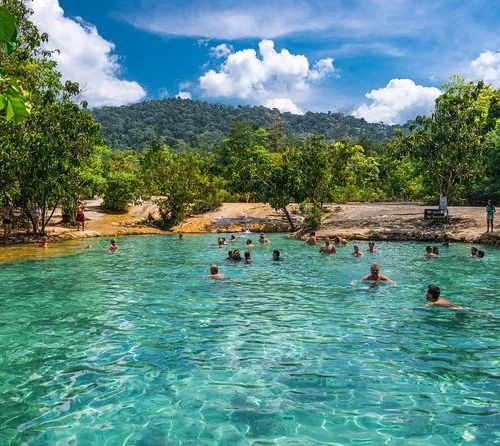
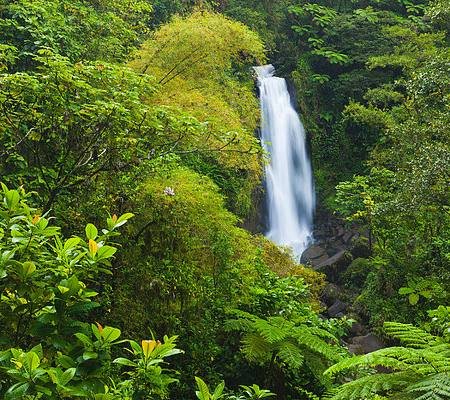
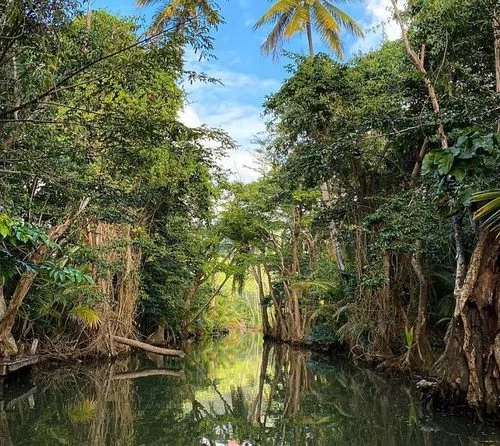
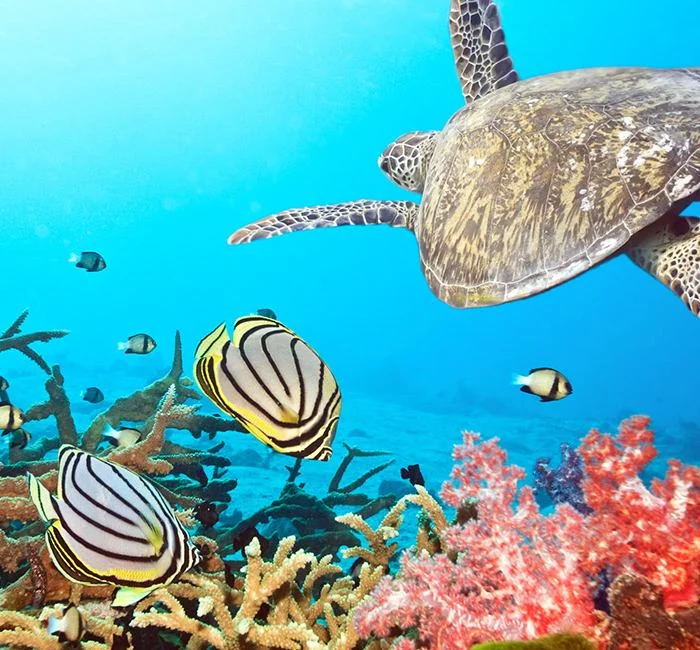
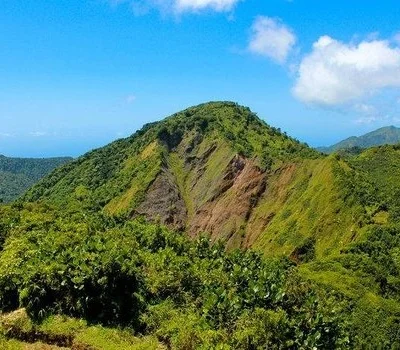
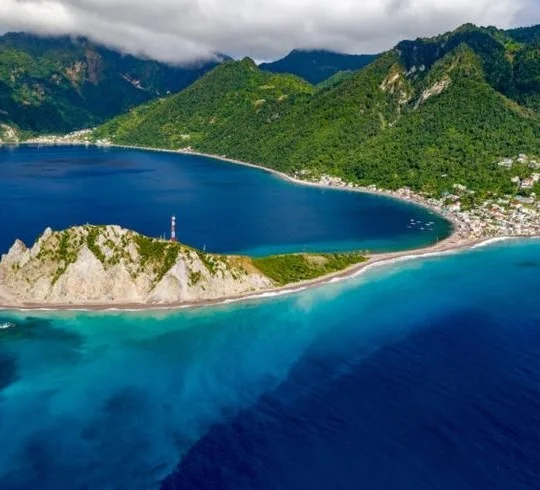
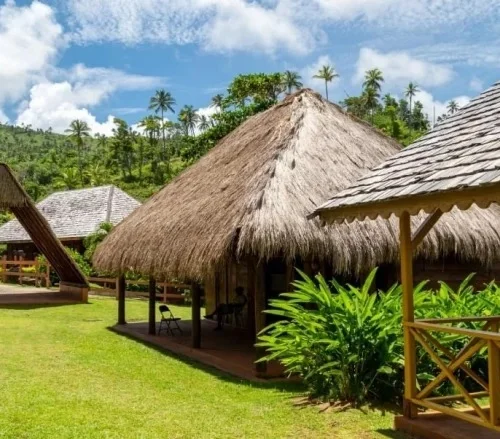
-
Boiling Lake Nestled deep within Morne Trois Pitons National Park, Boiling Lake is the world’s second-largest hot spring. A challenging 6–8 hour trek leads hikers through lush rainforest, past bubbling springs and steam vents, finally emerging onto a crater rim overlooking the 60–70 m diameter lake. Temperatures near the shore reach up to 90 °C, creating a surreal mist that rises above the silvery surface. The surrounding trail winds through verdant cloud forest where endemic birds and ferns thrive. Guided tours ensure safety on uneven terrain and highlight the area’s volcanic geology and cultural significance to the indigenous Kalinago people.
-
Emerald Pool Tucked along the En Basin Trail near Laudat, Emerald Pool welcomes visitors with a gently cascading waterfall that feeds into a jade-green pool framed by moss-covered boulders. A short, family-friendly hike through tropical hardwood forest reveals orchids, tree ferns, and vibrant birdlife. The calm basin invites swimmers to cool off, while shaded rocks provide perfect picnic spots. Local guides share stories of “blighted” spirits who once haunted these pools and explain how the site remains an important ritual location. Well-maintained boardwalks and interpretive signage make this a must-see for both casual day-trippers and nature photographers.
-
Trafalgar Falls Often called the “twin waterfalls,” Trafalgar Falls comprises two cascades—“Mother” and “Father”—plunging 40 m and 25 m respectively into a misty gorge. Accessible via a short trail from the parking area, the viewpoint offers breathtaking panoramas of the lush valley below. Adventurous visitors can descend to the base, where natural hot springs bubble beside the waterfall pools. The surrounding rainforest teems with bright heliconias, giant ferns, and endemic songbirds. Picnic tables and a small café at the trailhead provide convenience, while knowledgeable guides explain the geothermal activity that sustains this unique ecosystem.
-
Indian River Winding through the Cabrits Peninsula mangroves, the Indian River is popular for guided boat tours that combine wildlife spotting and film lore—parts of “Pirates of the Caribbean” were shot here. At dawn, this serene canal glimmers as archaeologists note Amerindian artifacts along its banks. Spot herons, kingfishers, and the occasional crocodile as captains navigate narrow channels. After the tour, visitors can explore nearby Fort Shirley, which overlooks the river mouth and offers panoramic views of Prince Rupert Bay. Evening “bioluminescence” paddles reveal magical glowing plankton beneath the surface.
-
Champagne Reef Named for its effervescent bubbles created by volcanic vents on the seabed, Champagne Reef beckons snorkelers and scuba divers to experience an underwater playground. Warm Caribbean waters, visibility exceeding 30 m, and vibrant coral gardens attract parrotfish, angelfish and turtle sightings. The gentle current carries tourists over rocky outcrops where sulphur-enriched bubbles tickle the skin like a natural jacuzzi. Local dive shops provide equipment and guided trips, ensuring both beginners and certified divers can safely explore this one-of-a-kind marine environment.
-
Morne Diablotins As Dominica’s tallest peak at 1,447 m, Morne Diablotins challenges seasoned hikers with steep ascents through montane rainforest. The multi-day Syndicate Trail weaves across ridgelines, passing rare orchids and birdlife like the Imperial amazon parrot. Campsites along the way offer rustic lodging amid mist-clad valleys. Summit day rewards climbers with sweeping panoramas of the island and glimpses of Guadeloupe on the horizon. Local guides emphasize Leave No Trace principles and share tales of French settlers who once operated coffee plantations on its slopes.
-
Scott’s Head At the southern tip where the Caribbean Sea meets the Atlantic Ocean, Scott’s Head overlooks a narrow isthmus and dramatic cliffs. Kayak tours depart from the village, weaving through sea caves and coral gardens abundant with sponges and reef fish. Coastal trails lead to a historic lighthouse and offer sweeping views of Soufrière Bay. Local families operate beachside huts serving fresh seafood and cold drinks. The site’s unique geography makes it a prime spot for snorkeling, cliff-jumping and sunset photography.
-
Kalinago Territory Covering 3,700 ha on the northeast coast, the Kalinago Territory preserves the heritage of Dominica’s Indigenous Carib community. Visitors can tour traditional villages built from local materials, observe basket weaving, and sample cocoa tea made from estates maintained by Kalinago farmers. Guided hikes reveal prehistoric rock carvings and medicinal plant gardens. The UNESCO-backed Barana Autê eco-village demonstrates sustainable living, featuring solar ovens and organic agriculture. Annual cultural festivals showcase drumming, dance and storytelling that keep ancient traditions alive.
Transportation
With a rugged interior and winding coastal roads, Dominica’s transport network demands careful planning. Options include shared minibuses, private taxis, 4×4 rentals and interisland ferries—each offering unique insights into local life.
- Route Taxis & Minibuses: Shared vans operating fixed routes; fares paid onboard in EC$. Frequent but can be crowded—best for short hops between villages.
- Private Taxis: Metered in Roseau and Portsmouth; negotiate rates for full-day hires that include off-road excursions to waterfalls and hot springs.
- Car & 4×4 Rentals: Recommended for exploring interior trails; check road conditions during rainy season and confirm insurance covers unpaved roads.
- Ferry Services: Regular ferries connect Roseau to Guadeloupe and Martinique; book ahead during peak season (Dec–April).
- Walking & Hiking Trails: Well-marked paths—Morne Trois Pitons and Syndicate Trail are locally guided; bring sturdy shoes, water and insect repellent.
- Boat Tours: Small catamarans and glass-bottom boats depart from Portsmouth for snorkeling at Champagne Reef and marine wildlife spotting.
Airports
Dominica’s two airfields serve regional and international links. Douglas-Charles Airport handles most arrivals, while Canefield caters to small-craft and charter flights—ideal for reaching mountain lodges close to Roseau.
- Douglas-Charles Airport (DOM): Located in Marigot (north-east), 2 km from ferry terminal; services include LIAT and inter-Caribbean charters.
- Canefield Airport (DCF): Near Roseau (southwest), short runway for Twin Otter and charter planes; scenic approach over Morne Bruce.
- Facilities: Customs, small duty-free shop, car rental desks and taxi stands at both airports; limited food outlets.
- Ground Transfers: Pre-book shuttle or taxi; forty-five minute drive from DOM to Roseau, twenty minute drive from DCF to city center.
- Future Plans: Proposed runway extensions and terminal upgrades at DOM to accommodate larger jets and increase tourist capacity.
Visa & Travel
| Nationality/Region | Entry Status | Max Stay | Key Requirements |
|---|---|---|---|
| EU, USA, Canada, UK, Australia, New Zealand | Visa Free | Up to 6 months | Passport valid ≥6 months, return/onward ticket |
| CARICOM member states | Visa Free | Up to 6 months | Valid national ID or passport |
| China, India, Russia, Vietnam | Visa Required | Varies by bilateral agreement | Apply at Dominica embassy; proof of funds; itinerary; invitation letter |
| Transit (all nationalities) | Transit Allowed | ≤24 hours | Confirmed onward ticket |
Health: No mandatory vaccinations except Yellow Fever if arriving from endemic zones; recommended: hepatitis A, typhoid.
Customs: Duty-free allowance: 200 cigarettes, 250 ml alcohol, up to US$200 of other goods.
Safety Tips: Low crime rates but remain vigilant in crowded markets; secure valuables when hiking remote trails.
Money Matters: Banks open Mon–Fri 08:30–15:00; ATMs dispense XCD only; major hotels accept USD at fixed rate.
Etiquette: Greet with a smile and “Good day”; ask permission before entering Kalinago Territory; respect park signage and guided-tour rules.

